Woolly mammoth with preserved poop, wool and ligaments dredged from Siberian lake
Almost the whole skeleton is there.
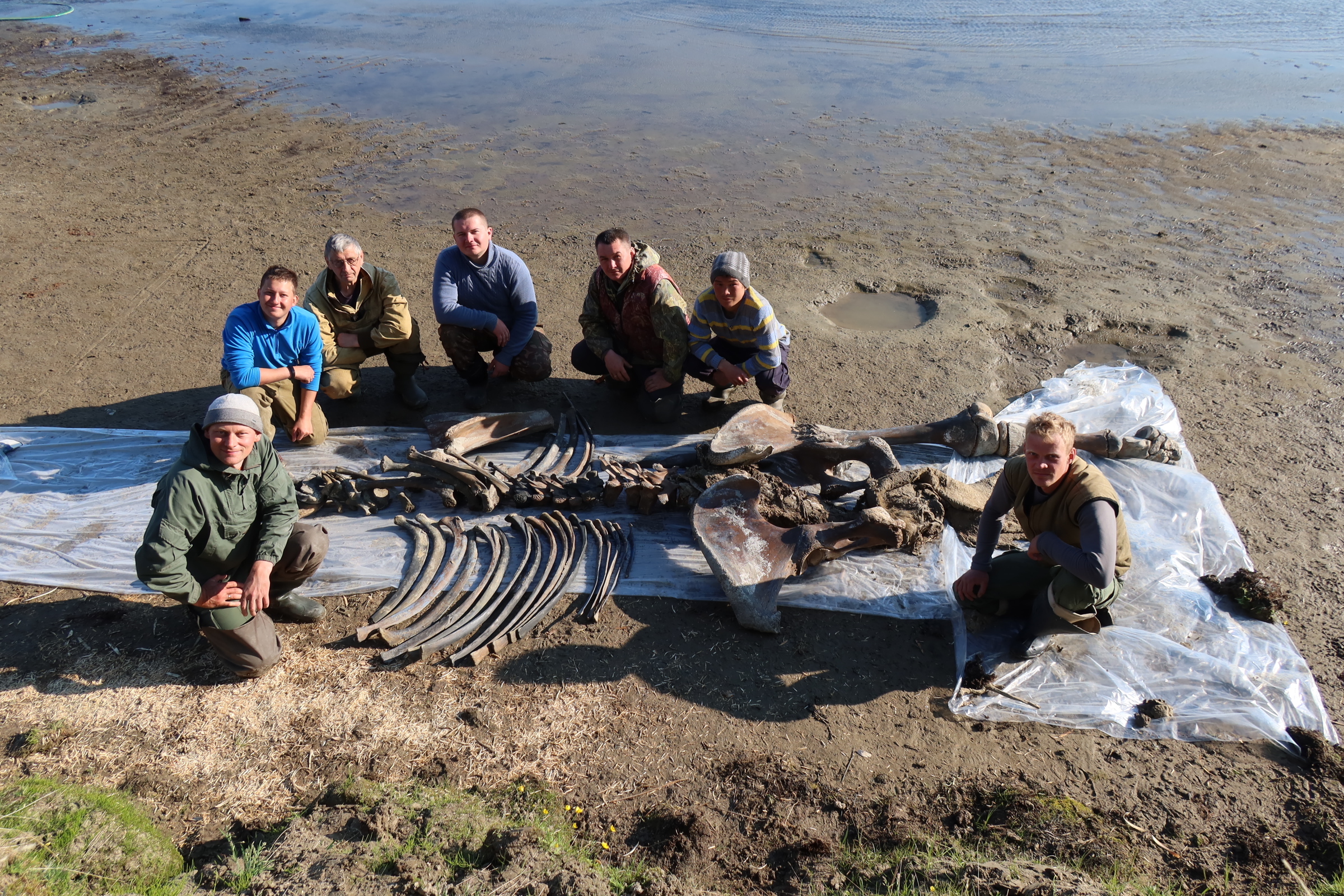
A man following a reindeer herd in northwestern Siberia made the discovery of a lifetime when he passed by a lake on July 20; poking out of the water was the enormous skull of a woolly mammoth dating back at least 10,000 years.
When scientists came to investigate the mammoth skull, they made an even larger discovery — recovery efforts unearthed most of the woolly mammoth's (Mammuthus primigenius) remaining skeleton, some of its soft tissues and wool, and even a piece of fossilized poop (called a coprolite) that the mammoth may have passed before its death at the end of the last ice age.
The accidental finding was made possible by low water levels in Lake Pechenelava-To, in the Yamal peninsula of the Yamalo-Nenets region, said Pavel Kosintsev, a senior researcher at the Institute of Plant and Animal Ecology in Russia at the Urals Branch of the Russian Academy of Sciences, who supervised the mammoth's excavation.
"If the water level hadn't fallen, the mammoth wouldn't have been found," Kosintsev told Live Science in an email.
Related: Mammoth resurrection: 11 hurdles to bringing back an ice age beast
During the excavation, the researchers built a wooden fort around the mammoth's remains, and then they used a sump pump to remove water from the enclosure. After wading through the muck, the researchers were able to unearth about 90% of the mammoth's bones, two large pieces of skin, parts of the mammoth's woolly coat and one coprolite, Kosintsev said.
To honor Konstantin "Kostya" Tadibe, the man who found the mammoth, the researchers named it the Tadibe mammoth. The skeletal remains indicate that the Tadibe mammoth was male, stood about 6.5 to 8.2 feet (2 to 2.5 meters) tall and was about 15 years old when it died, Kosintsev said. The coprolite, however, was small, just 2 inches (5 centimeters) in diameter.
Sign up for the Live Science daily newsletter now
Get the world’s most fascinating discoveries delivered straight to your inbox.
It's uncommon to find soft tissue on mammoth remains, but "coprolites are even rarer," Kosintsev said. "Scientists know no more than 10 [mammoth] coprolites." Studying coprolites can reveal information about mammoth diets and intestinal parasites, he added.
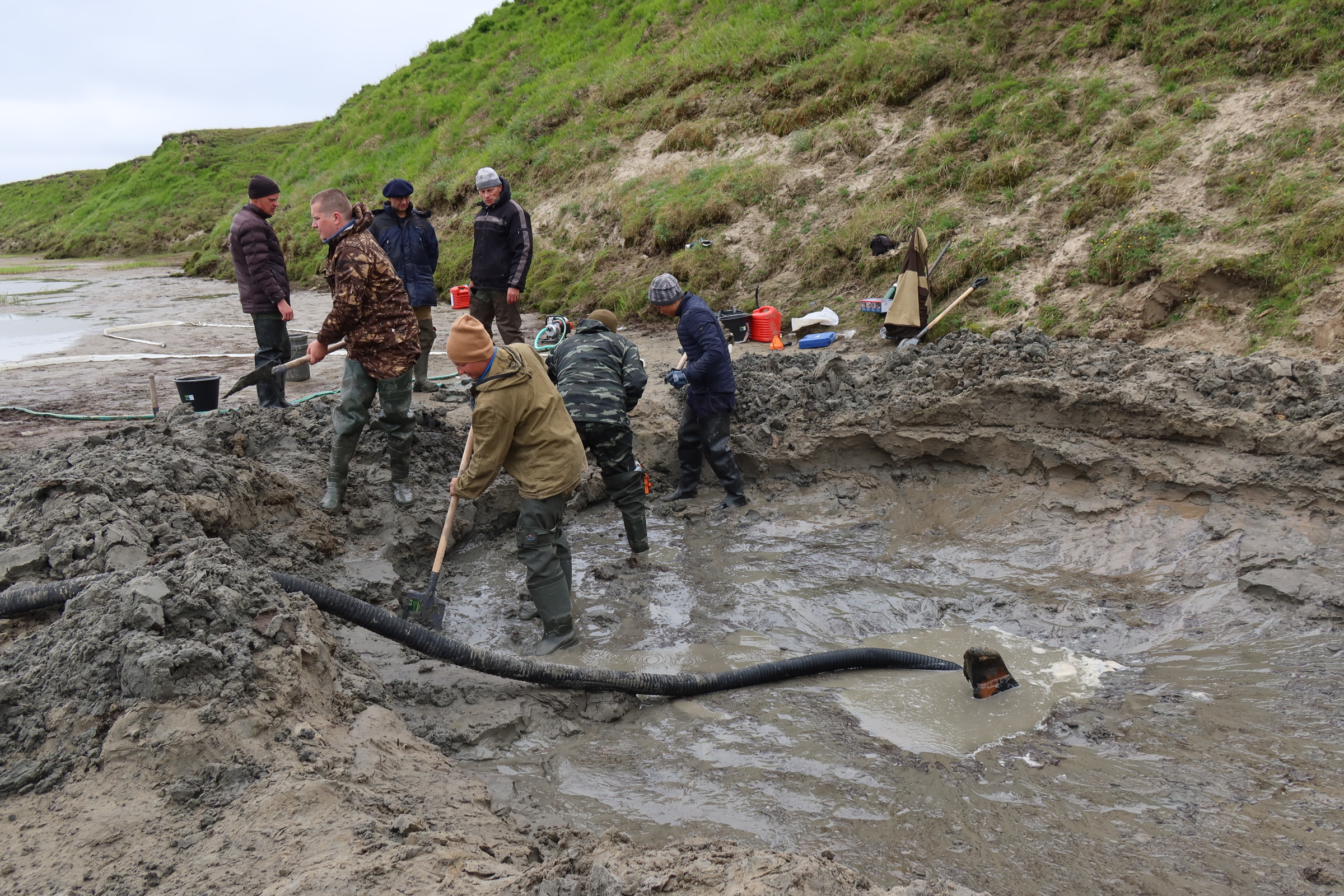
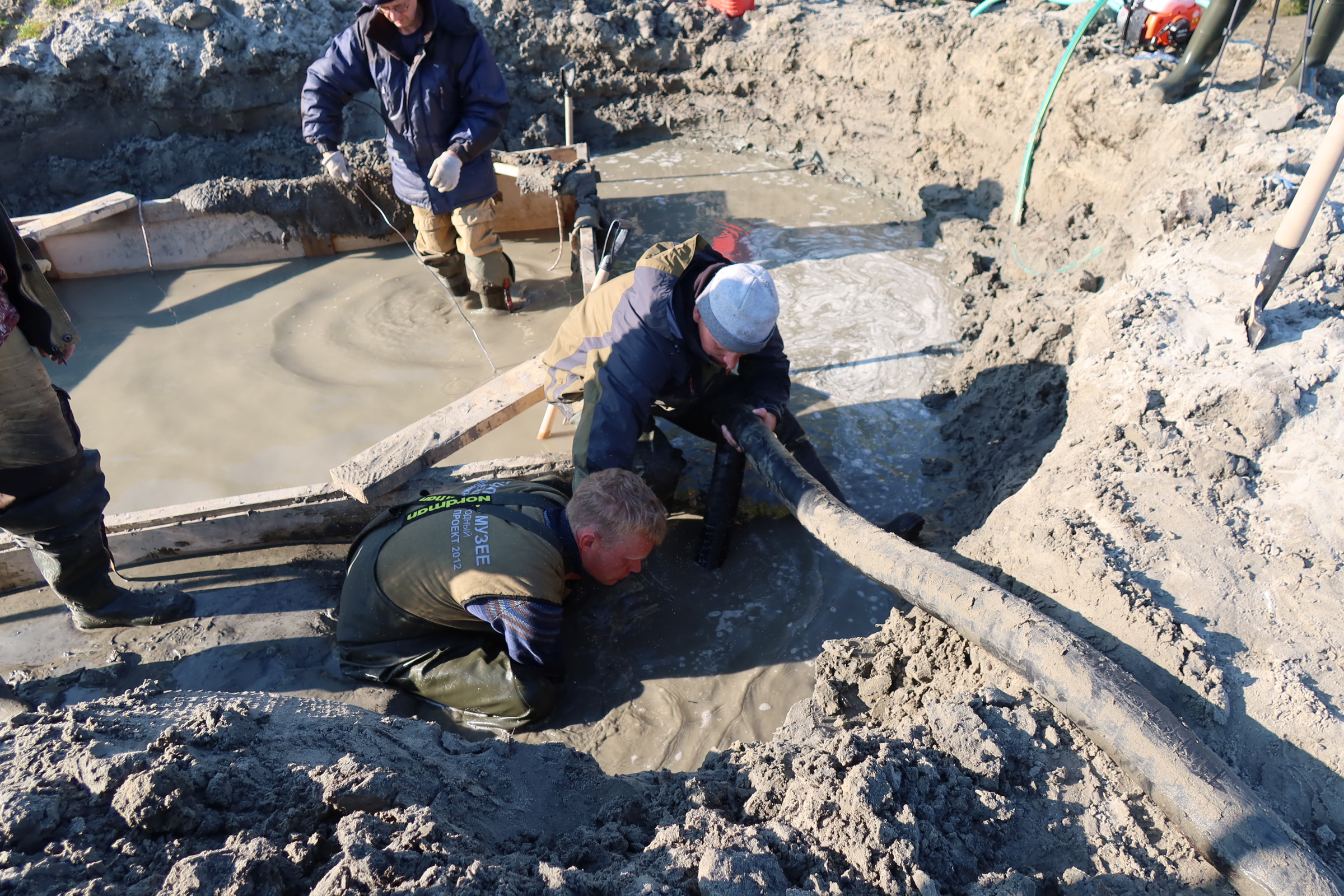
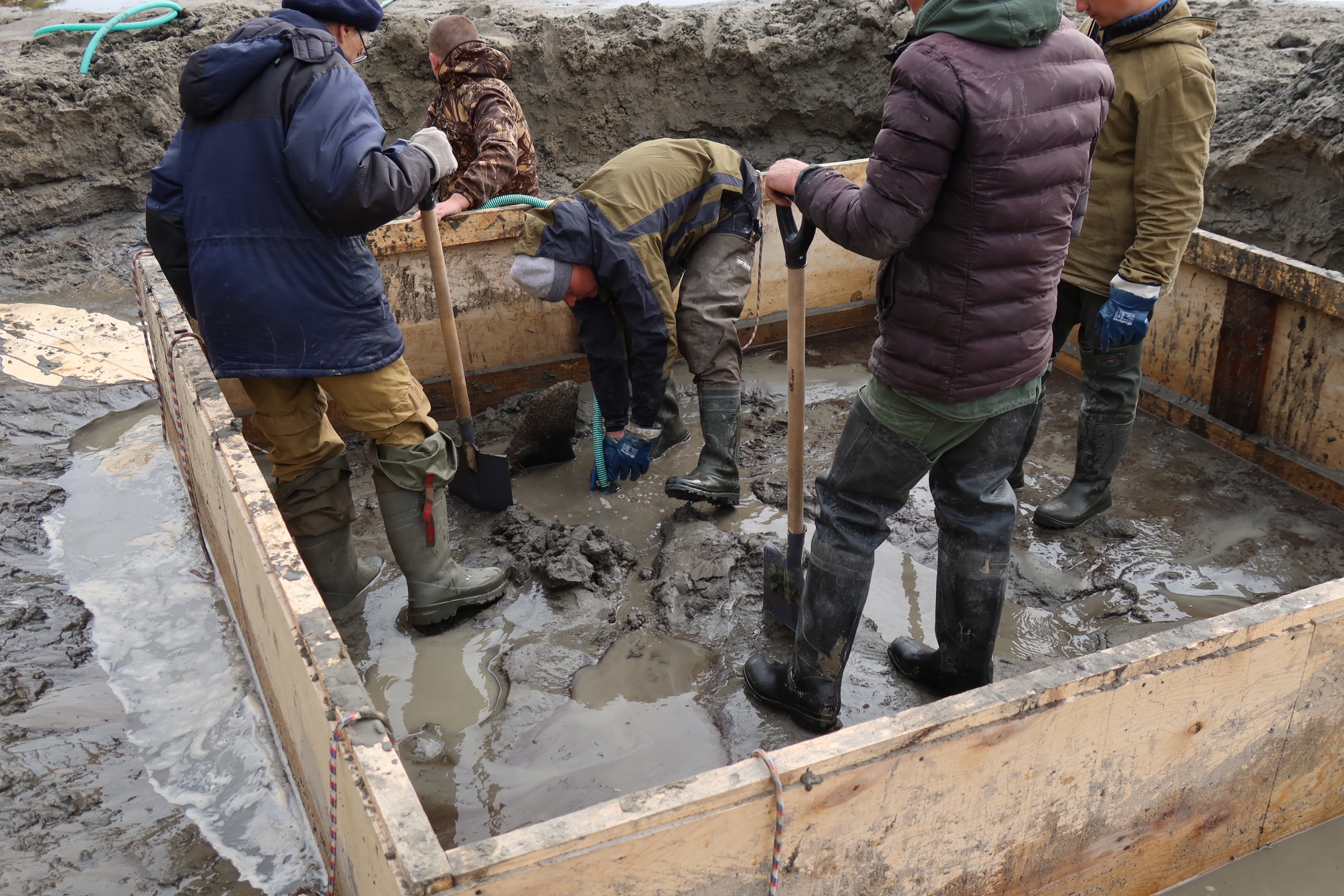
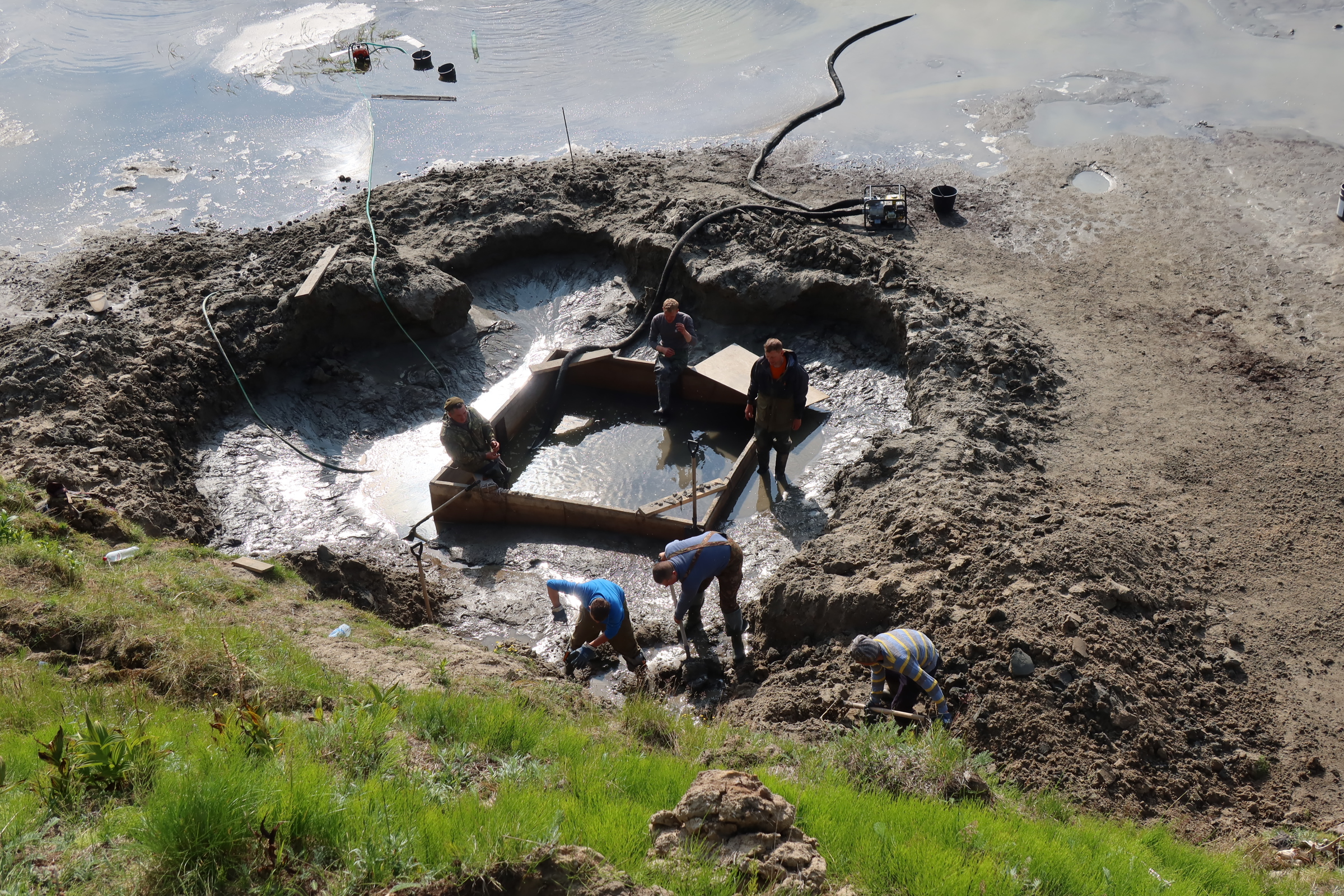
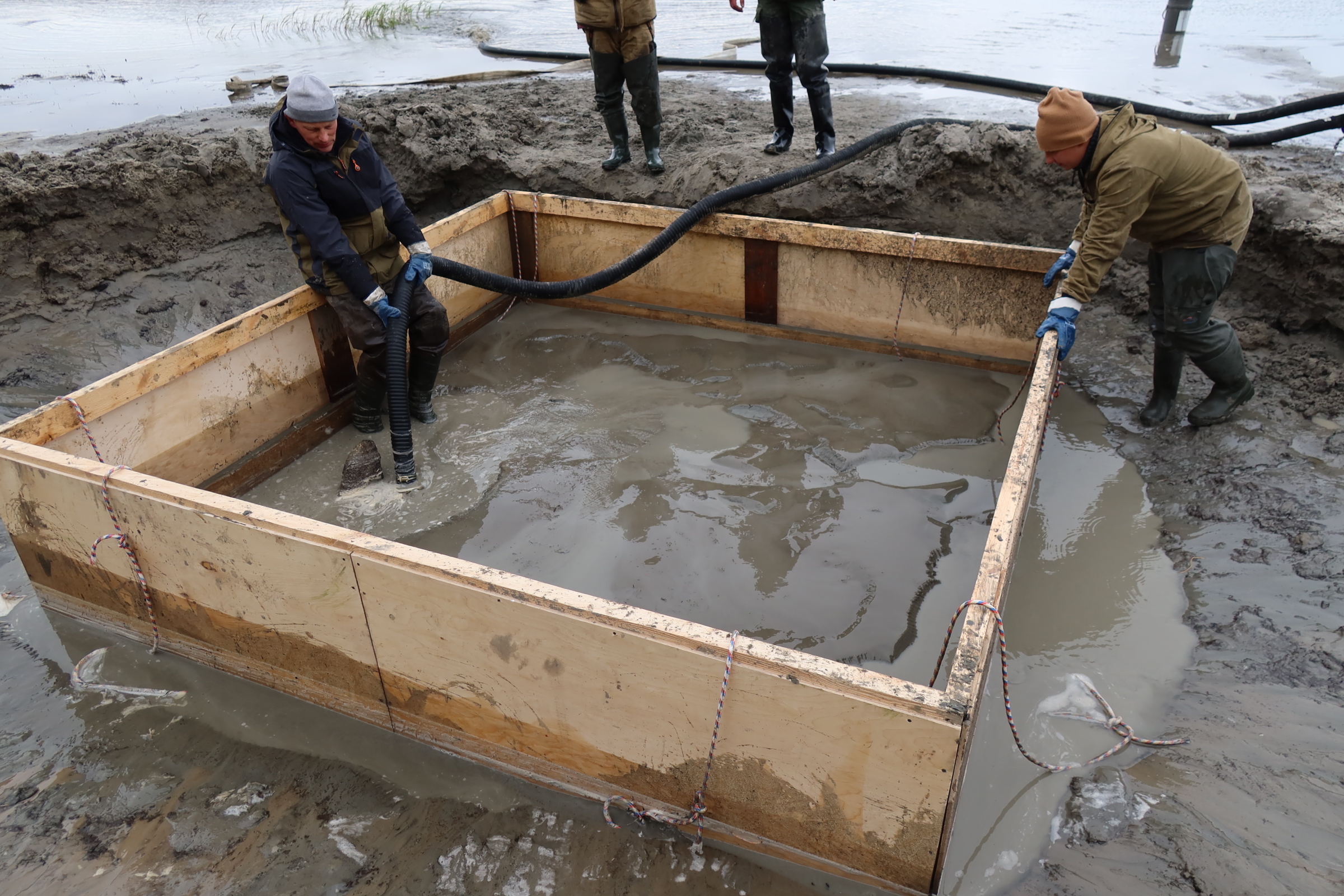
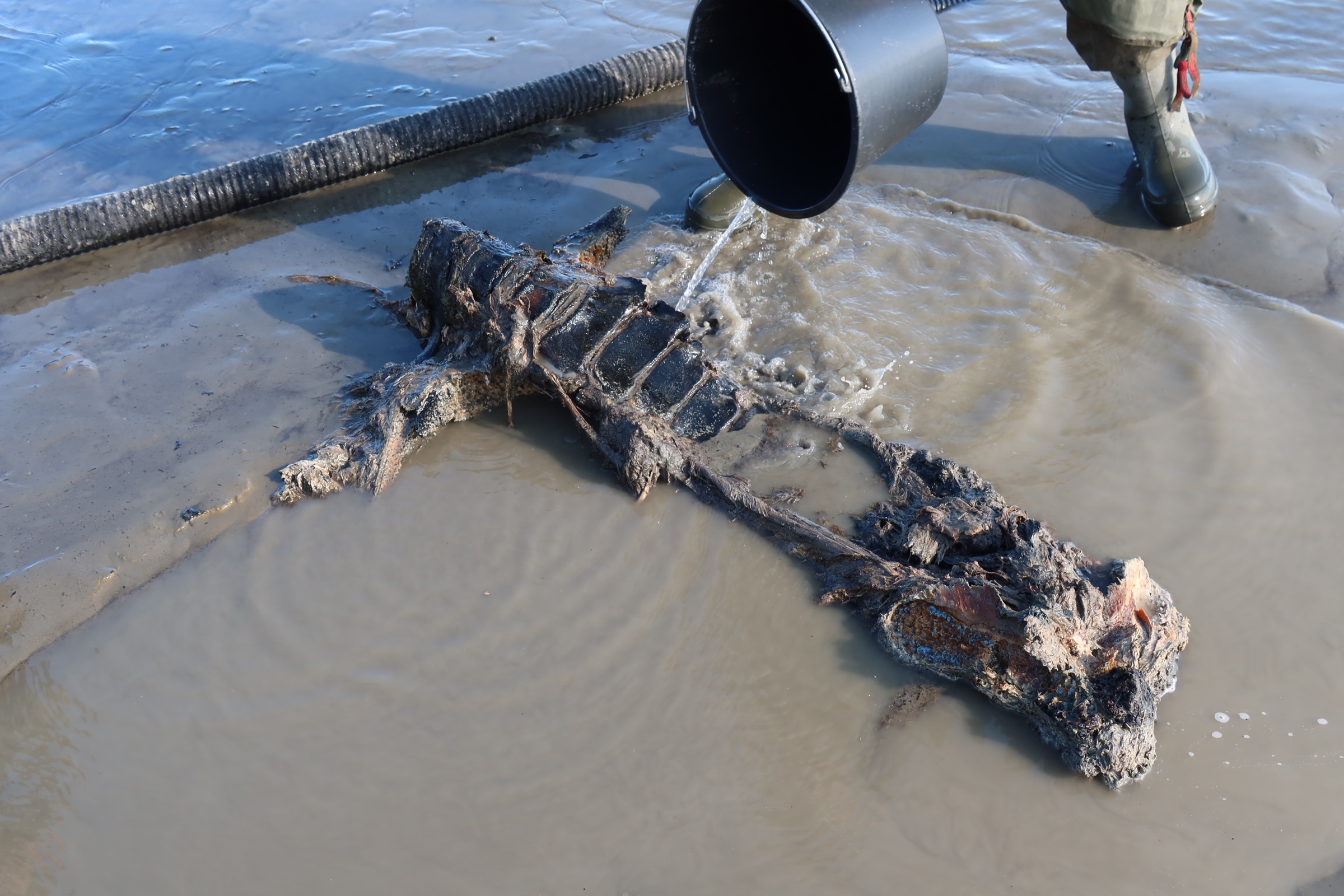
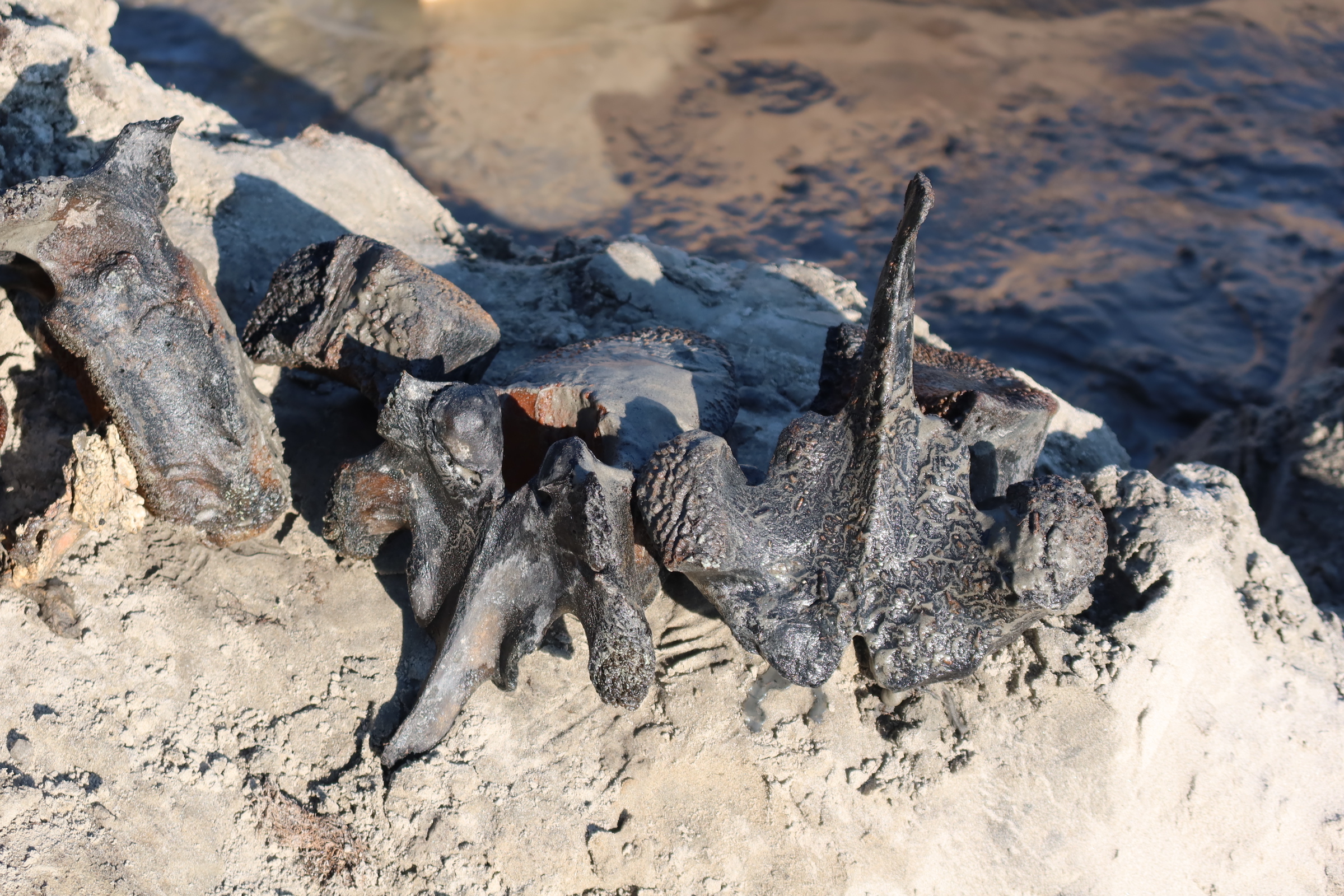
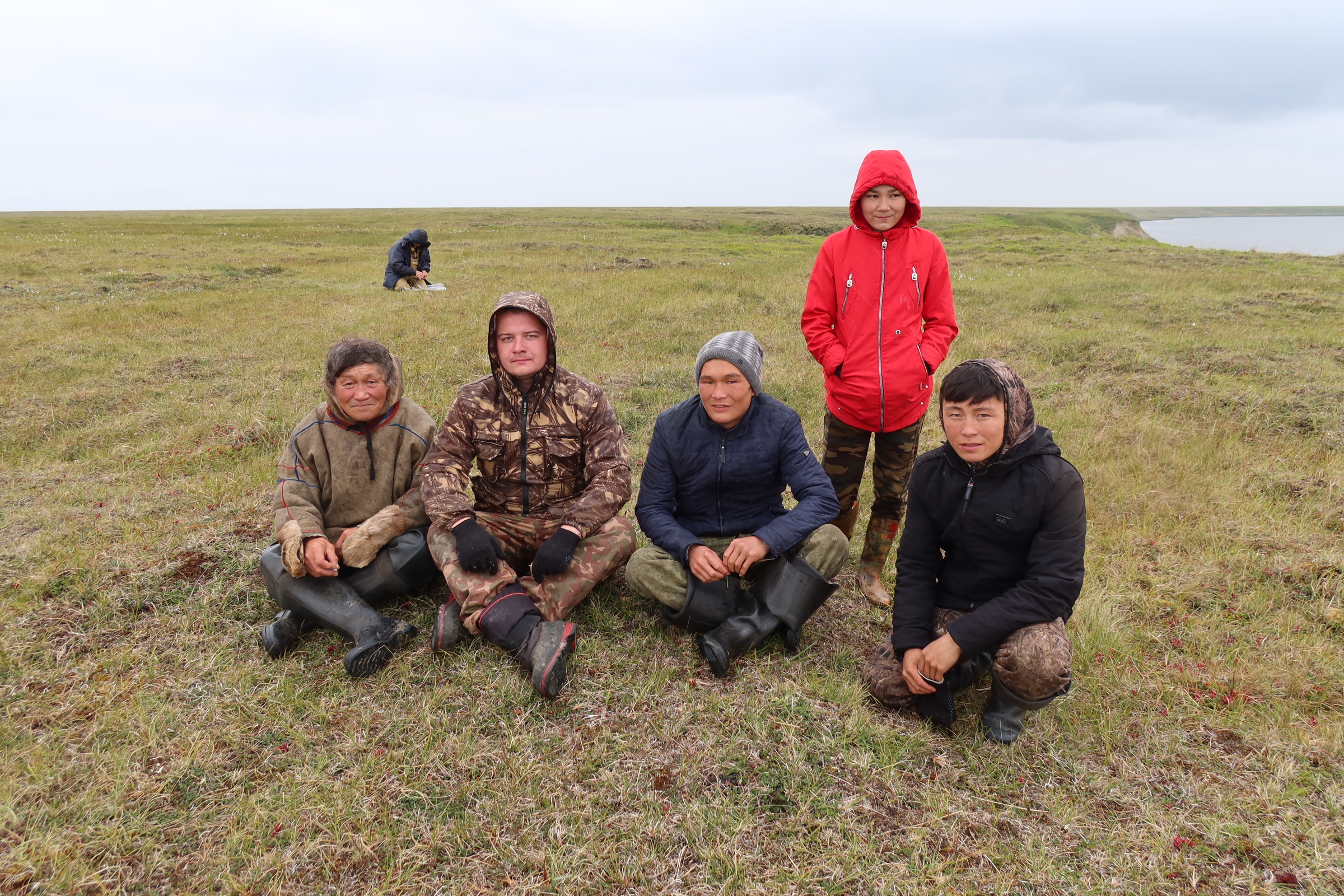
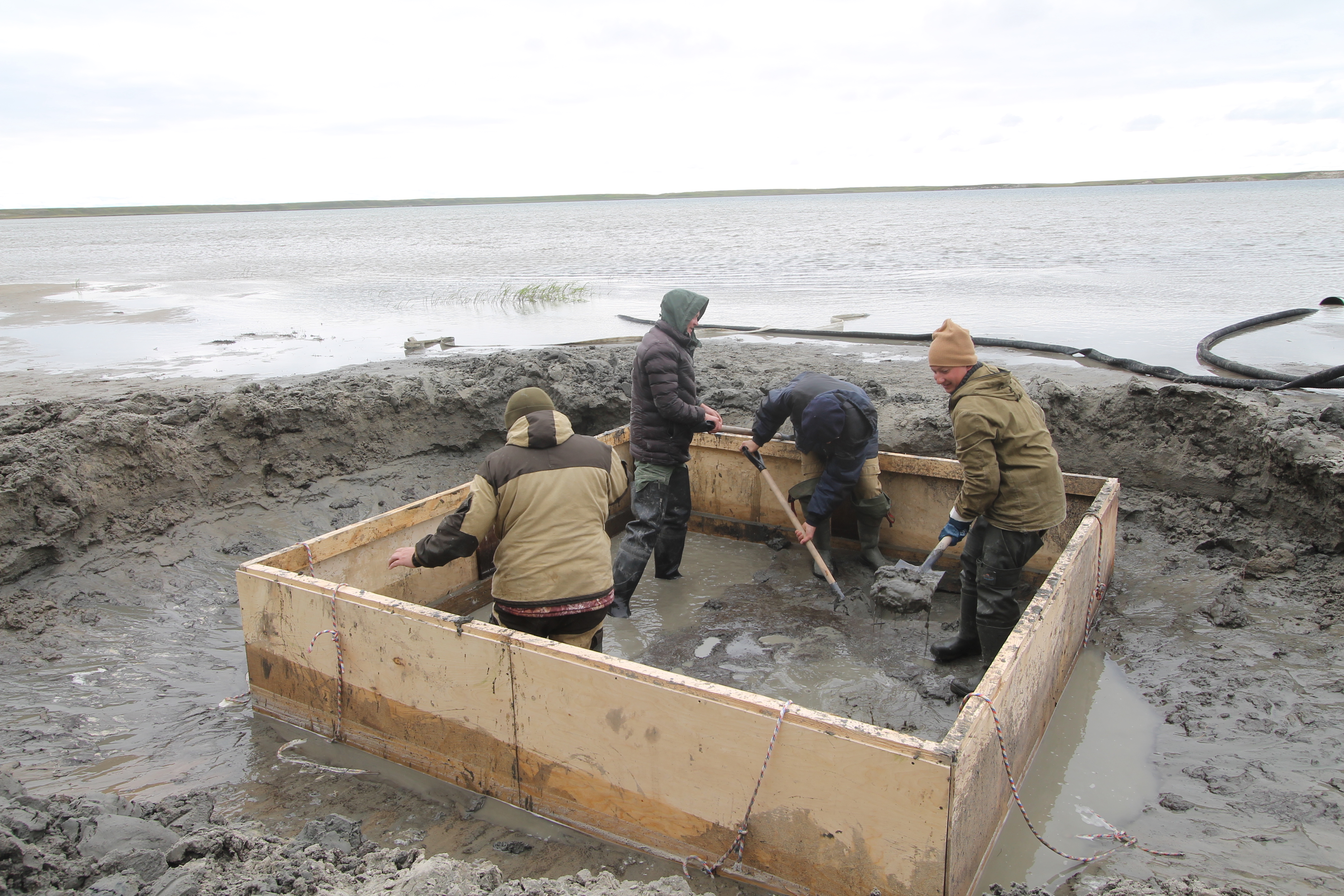

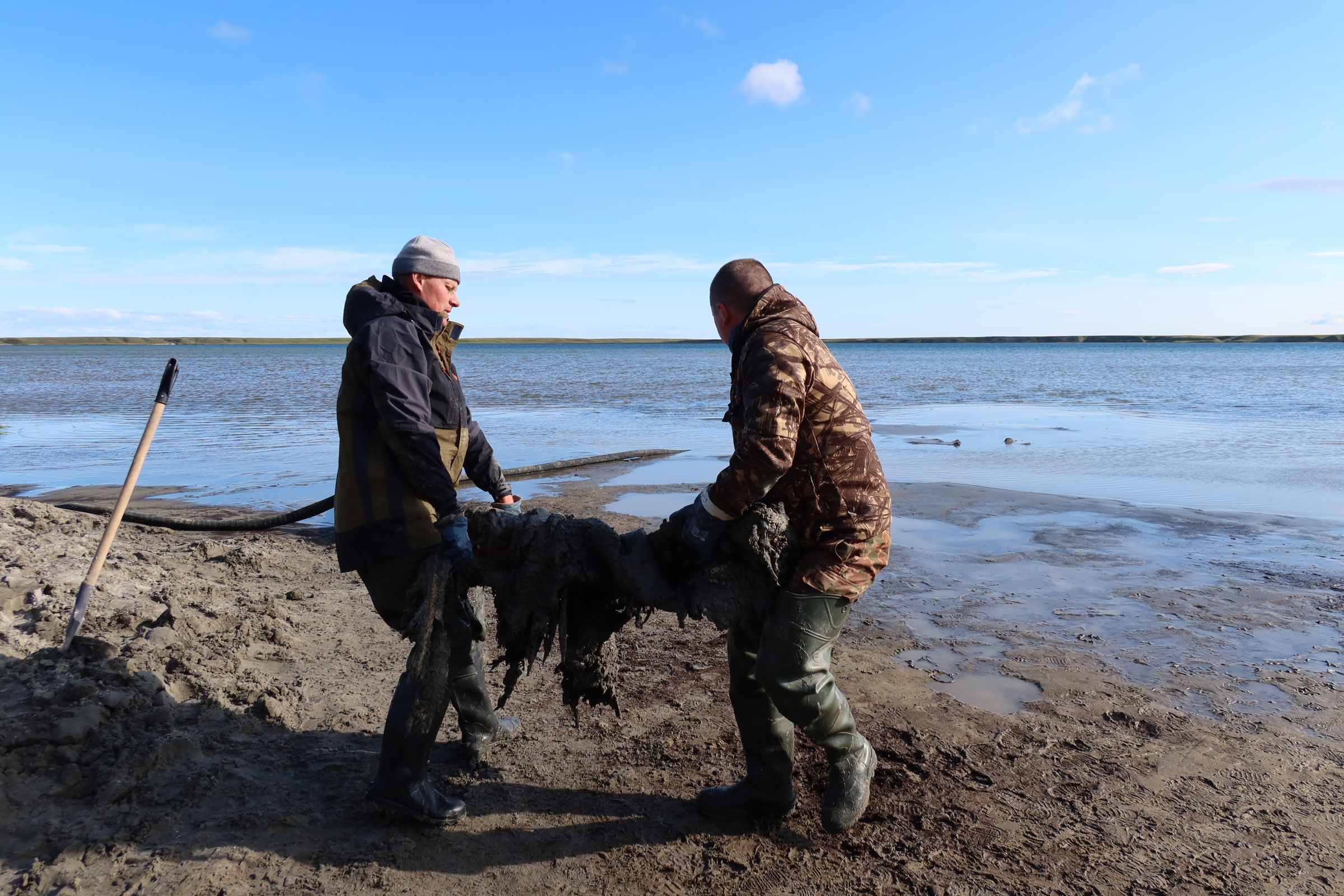
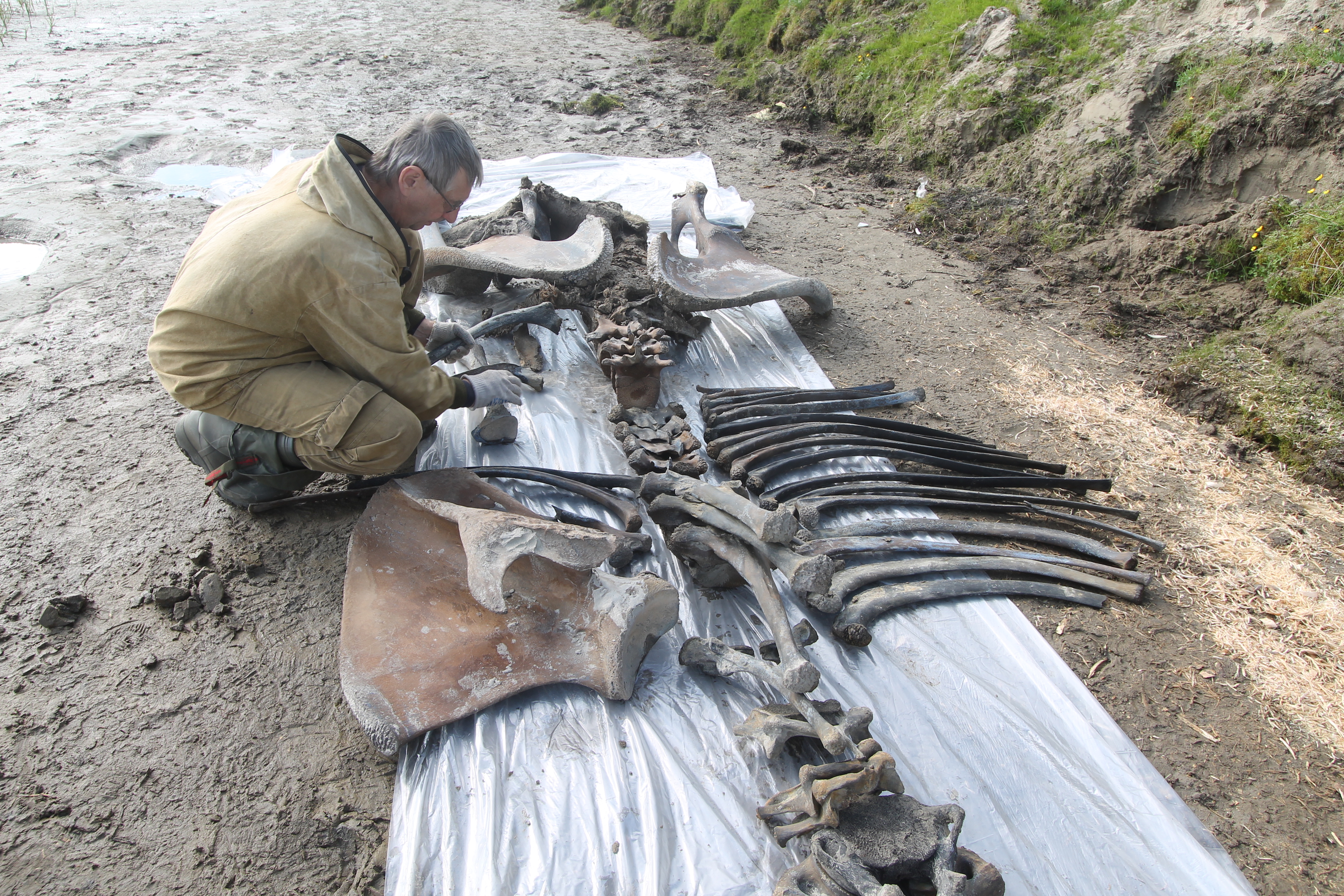
Meanwhile, the study of soft tissues "allows scientists to learn how mammoths adapted to the cold climate of the ice age," Kosintsev said. According to the Associated Press, the preserved soft tissues included the Tadibe mammoth's ligaments, the band of tough tissue that connects bones or cartilage together at a joint.
The ligaments, which are largely made of collagen — the same material that's found in skin, cartilage and bone — likely survived in Siberia's normally cold temperatures where they would be slow to decay, said Daniel Fisher, a curator at the Museum of Paleontology at the University of Michigan, who wasn't involved with the Tadibe mammoth discovery. "Ligaments are one of the last soft tissues to break down under bacterial activity," Fisher told Live Science.
After looking at a photo of the Tadibe mammoth's skeletal remains, Fisher noted that one of the pachyderm's ribs looks like it had been broken or fractured, but had later healed.
"It sometimes happens that animals get in a fight or there's an injury and they break a rib, but then it heals with a bit of an offset,” he said. “And it looks to me like that could be a bit of a broken healed fracture on that rib."
However, Fisher said he or another paleontologist would have to take a closer look at the rib to be sure.
Related: Photos: Ice age mammoth unearthed in Idaho
Even with this injury, it remains a mystery as to why the mammoth died, although Kosintsev noted that "there is no indication that this mammoth was killed by a human." That wasn't the case for a 25,000-year-old mammoth found in Poland that had a javelin embedded in its rib, Live Science previously reported. However, other research offers a clue about this mammoth's demise: Woolly mammoth bachelors were more likely than females to die in natural traps, such as falling through thin ice, tumbling into holes or getting stuck in mudflows, according to a 2017 study published in the journal Current Biology. These deaths likely came to pass because inexperienced male mammoths tended to travel alone, the researchers of that study said.
Disappearing mammoths
Mammoths went extinct in mainland Russia about 10,000 years ago (although dwarf woolly mammoths survived until about 4,000 years ago on Wrangel's Island, north of Russia), and now their remains are disappearing fast.
In fact, there may be more mammoth findings as Siberia's temperatures rise and its permafrost melts.
When permafrost melts, mud at lakes "slumps and slides and goes into deeper portions of lake basins, so things like this are exposed, maybe around [the] edges of lakes," Fisher said. Once exposed, previously frozen specimens resume their decay.
"As you can see, [the team in Russia] put a lot of work into recovering this. But they're not going to be able to recover every specimen," Fisher said. "For every one that they do recover, there are 10 if not 20 lost."
Fisher added that mammoth remains face another threat: people looking to make a profit by selling the ivory from their tusks. "There is a growing commercial market for these kinds of specimens," he said.
So far, Tadibe is the third mammoth uncovered on the Yamal peninsula, according to The Siberian Times. The other two are younger mammoths: the baby Lyuba, a calf discovered in 2007, who died just a month after birth; and the youngster Masha, a female found in 1988, who died between 1 and 3 months of age.
Originally published on Live Science.

Laura is the archaeology and Life's Little Mysteries editor at Live Science. She also reports on general science, including paleontology. Her work has appeared in The New York Times, Scholastic, Popular Science and Spectrum, a site on autism research. She has won multiple awards from the Society of Professional Journalists and the Washington Newspaper Publishers Association for her reporting at a weekly newspaper near Seattle. Laura holds a bachelor's degree in English literature and psychology from Washington University in St. Louis and a master's degree in science writing from NYU.









